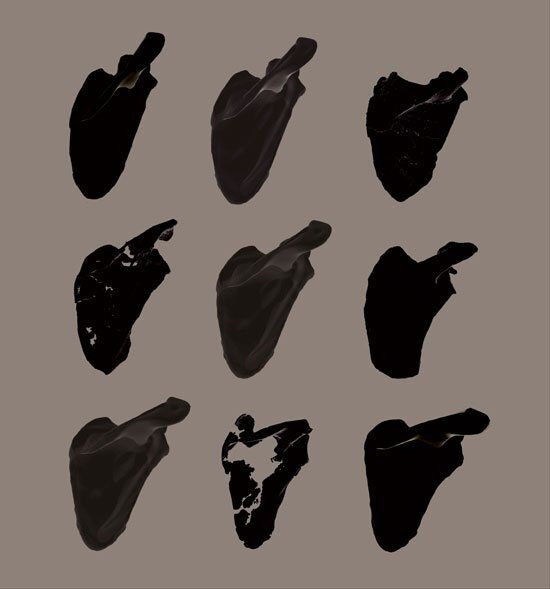
An analysis of fossil shoulder blades from early human species finds that the last ancestor shared in common between humans and chimpanzees was similar to a modern African ape. Relatively little is known about the earliest members of the human lineage because fossils from this period are rare, rendering it difficult to reconstruct the anatomical and behavioral changes that occurred during human evolution. Nathan Young and colleagues used 3D shape measurements of the shoulder blade to test alternative evolutionary hypotheses about the last common ancestor. The authors found that the best-supported explanation is that the human shoulder gradually evolved from being African ape-like to its modern form. Contrary to earlier studies, this finding suggests that gorillas and chimpanzees have changed little in the past 6-7 million years, while the human lineage has evolved considerably. The change in shoulder shape during human evolution is consistent with reduced use of the arms for climbing in trees and an increased reliance on throwing and using tools, the authors suggest. The fossil evidence suggests that this shift to living on the ground happened slowly, and that for the majority of human evolutionary history, human ancestors continued to use trees to find food and retreat from predators, according to the authors.
The detailed study* is published in the Proceedings of the National Academy of Sciences.
____________________________________________
Above: A hypothesized model of shoulder shape evolution from African ape-like (top left) to modern human (bottom right) including predicted ancestral forms (grey) and hominin fossils: Australopithecus afarensis (DIK 1-1 developmental simulation, top right), Australopithecus sediba (MH2, middle left), Homo ergaster (KNM WT15000, middle right), Homo neanderthalensis (Kebara 2, bottom middle). The increasingly inferior orientation of the spine (purple) is consistent with a history of sustained and gradual selection for reduced arboreality and increased tool use in the human lineage. Image courtesy of Nathan Young.
___________________________________________________________
*“Fossil hominin shoulders support an African ape-like last common ancestor of humans and chimpanzees,” by Nathan M. Young et al., Proceedings of the National Academy of Sciences, 7 September 2015.
___________________________________________________________
In addition, the latest Popular Archaeology ebook is now available.
______________________________________________
Travel and learn with Far Horizons.
____________________________________________
 This richly illustrated ebook version of a recent Popular Archaeology issue includes the following stories: The discovery of the tomb of a previously unknown pharaoh that is shedding light on a lost ancient Egyptian dynasty; how genetics is revolutionizing what we know about human evolution and our prehistoric past; one scholar’s controversial ‘New Chronology’ and how it supports the historicity of the biblical Exodus; how archaeologists are unearthing new history in Williamsburg, Virginia, a seat of British colonial power in 18th century America; the discovery of the remains of a major Roman legionary base in Israel; the unearthing of an ancient Judean fortified settlement in the borderlands between the biblical kingdoms of ancient Judah and the Philistines; and how archaeologists are uncovering evidence of what may have been an important administrative center of Judah during the 8th century BCE. Now available from Amazon.com!
This richly illustrated ebook version of a recent Popular Archaeology issue includes the following stories: The discovery of the tomb of a previously unknown pharaoh that is shedding light on a lost ancient Egyptian dynasty; how genetics is revolutionizing what we know about human evolution and our prehistoric past; one scholar’s controversial ‘New Chronology’ and how it supports the historicity of the biblical Exodus; how archaeologists are unearthing new history in Williamsburg, Virginia, a seat of British colonial power in 18th century America; the discovery of the remains of a major Roman legionary base in Israel; the unearthing of an ancient Judean fortified settlement in the borderlands between the biblical kingdoms of ancient Judah and the Philistines; and how archaeologists are uncovering evidence of what may have been an important administrative center of Judah during the 8th century BCE. Now available from Amazon.com!
____________________________________________







